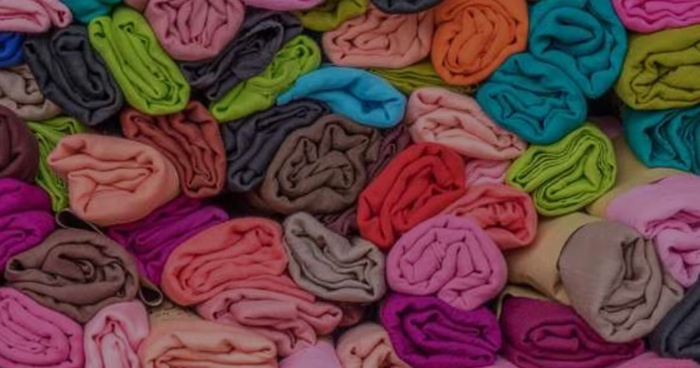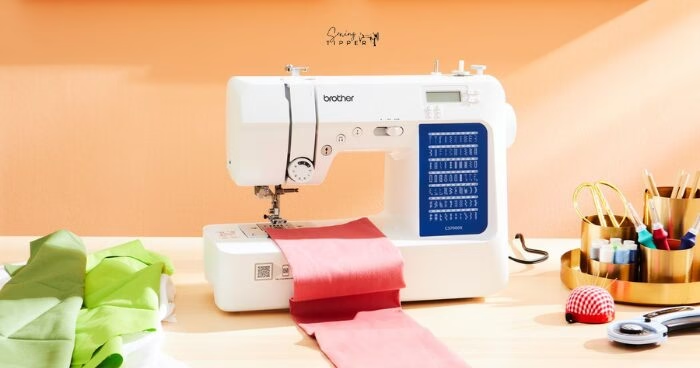Types Of Fabric And Their Uses – Best Guide
Fabric is a crucial element in sewing and fashion. The type of fabric you choose can greatly impact the comfort, durability, and appearance of a finished garment or project. With so many options available, it’s essential to understand the different types of fabric and their uses to make informed decisions.
Types Of Fabric And Their Uses – Best Guide
In this article, I will explore various fabric types, including natural fabrics, synthetic fabrics, blended fabrics, and speciality fabrics, and their common uses.
Understanding the properties of different fabrics can help you choose the right fabric for your sewing projects, whether they’re garments, home decor items, or other creative endeavors. Let’s explore the details of various fabric types and their uses.
Natural fabrics derive from plant or animal sources and offer breathability, comfort, and eco-friendly properties.
Common types of natural fabrics and their uses
1. Cotton
Cotton is a versatile and widely used natural fabric. It is known for its softness, comfort, and breathability. Cotton is suitable for creating a wide range of clothing and home decor items.
Cotton fabric is easy to care for, provides excellent insulation, and absorbs moisture well, making it suitable for all seasons. Moreover, it can be used to make garments like T-shirts, dresses, pajamas, and baby clothes. Cotton is also useful to make home decor items such as curtains, tablecloths, and bed linens.
2. Silk
People know silk as a luxurious and delicate natural fabric prized for its smooth texture, sheen, and durability. Silk manufacturers produce it from the cocoon of silkworms and highly value it for its comfort and lustrous appearance.
Fashion designers often use silk fabric in high-end garments such as evening gowns, formal wear, and lingerie. Home decorators also use it for curtains, pillowcases, and bedding.
People reserve silk for special occasions because it is a delicate fabric that requires special care. Overall, silk is a sought-after material that adds elegance and sophistication to various products.
3. Wool
Sheep and other animals produce wool, a natural fabric known for its warmth, durability, and natural elasticity. Therefore, wool is commonly used for winter clothing such as coats, sweaters, and blankets.
Additionally, wool’s excellent insulation makes it a popular choice for home decor items such as rugs and upholstery. People can also blend wool with other fabrics to create a variety of textures and characteristics.
4. Linen
Manufacturers make linen, a natural fabric, from the fibers of the flax plant. Linen is known for its cool, breathable, and lightweight properties, which make it ideal for summer clothing and home decor items.
Designers commonly use linen fabric in garments such as dresses, shirts, and pants, as well as in home decor items like curtains, tablecloths, and napkins. Linen’s high absorbency and quick-drying properties make it popular for warm weather.
5. Synthetic Fabrics
Synthetic fabrics are man-made materials created by combining different chemicals and fibers. They are known for their durability, affordability, and versatility.
Here are some common types of synthetic fabrics and their uses:
6. Polyester
Polyester is a synthetic fabric widely used in clothing and home decor. It is known for its durability, wrinkle resistance, and moisture-wicking properties.
Additionally, designers commonly use polyester fabric in garments such as shirts, dresses, jackets, and sportswear and home decor items like curtains, bedding, and upholstery.
Polyester’s durability, wrinkle resistance, and moisture-wicking properties make it a popular choice for clothing and home decor items.
7. Nylon
Nylon is a synthetic fabric with strength, elasticity, and lightweight properties. It is suitable for garments that require durability and stretch, such as activewear, swimwear, and hosiery.
Moreover, Its high tensile strength also makes it suitable for use in applications such as parachutes, tents, and ropes.
8. Rayon
Manufacturers make rayon, a semi-synthetic fabric, from wood pulp. People know rayon for its softness, durability, and breathability.
Designers commonly use rayon fabric in garments such as dresses, blouses, and linings. People also use rayon in home decor items such as curtains, bedding, and upholstery.
9. Acrylic
Acrylic is a synthetic fabric known for its softness, warmth, and lightweight properties. It is commonly used in garments like sweaters, blankets, and winter accessories. Acrylic fabric is also used in home decor items like rugs and upholstery.
What are the Blended Fabrics?
Manufacturers combine two or more types of fibers to produce blended fabrics with desirable properties. Here are some common types of blended fabrics and their uses:
Cotton blend fabrics: combine cotton with other fibers such as polyester, spandex, or rayon. Garments made from cotton blend fabric are known for their softness, breathability, and durability and are commonly used in t-shirts, jeans, and casual wear.
Polyester blend fabrics: combine polyester with other fibers like cotton, rayon, or spandex. Garments made from polyester blend fabric are known for their durability, wrinkle resistance, and stretchability and are commonly used in activewear, outerwear, and sportswear.
Wool blend fabrics: Wool blend fabrics combine wool with other fibers like polyester, nylon, or acrylic to create a soft, warm, and durable fabric. Designers commonly use wool blend fabric in garments like coats, sweaters, and blankets and in home decor items like rugs and upholstery.
Silk blend: To create silk blend fabrics, manufacturers combine silk with other fibers like cotton, rayon, or polyester. The resulting fabric retains silk’s luxurious properties while also benefiting from increased durability and affordability. Silk blend fabric is popular in garments like blouses, dresses, and scarves.
READ ALSO: Sewing Machine Parts And Functions
What’s the difference between fabric and material?
In general, the terms “fabric” and “material” can often be used interchangeably to refer to a type of cloth or textile. However, there is a subtle difference between the two terms.
“Material” is a broader term that refers to any substance or matter that can be used to make something. For example, wood, metal, plastic, and paper are all materials. When it comes to textiles, “material” refers to any substance that can be woven, knitted, or otherwise made into fabric, such as cotton, silk, wool, polyester, etc.
On the other hand, “fabric” specifically refers to a type of material created by weaving, knitting, crocheting, or otherwise interlacing fibers or yarns together to form a flexible, planar structure. Fabric is generally used for clothing, bedding, upholstery, and other textile applications.
So, in summary, while “material” refers to any type of substance that can be used to make something, “fabric” specifically refers to a type of material that has been woven, knitted, or otherwise interlaced into a cloth or textile.
How can I tell what kind of fabric I have?
The simplest way to determine your fabric type is to conduct a burn test and take proper safety precautions. Here are some typical observations:
- When synthetic fibers burn, they emit a sharp and unpleasant odor and form hard beads.
- When cellulose fibers burn, they give off a smell similar to burning paper or wood, form light ash, or become hard and brittle.
- When natural fibers burn, they emit a smell like burning paper, rope, or hair and form ash or brittle beads.
It’s important to note that the difference in the type of beads formed during the burn test is crucial. Brittle beads can be easily crushed, while hard beads cannot.
Can I Make A Fabric Stronger?
Yes, it is possible to strengthen fabric. One common method in sewing is to use interfacing, a layer of fabric sewn onto the back of the main fabric, to add strength and structure to the fabric.
It can be made from various materials, including woven and non-woven fabrics, and the choice of interfacing will depend on the type of fabric being used. For example, a lightweight cotton fabric may benefit from lightweight fusible interfacing.
However, a heavier fabric like denim may require sturdier non-woven interfacing to add additional strength. Interfacing can be particularly useful for reinforced areas of a garment, such as collars, cuffs, and waistbands.
What is the strongest type of fabric?
While spider silk is technically the strongest natural fiber, it is not commonly used in fabric production. When it comes to fabrics made from more commonly used natural fibers, hemp is often considered the strongest.
However, the fabric’s strength also depends on how the fibers are spun and woven. Therefore, it is a close tie with flax or linen, which are also known for their strength and durability.
Can I use silk fabric for everyday clothing?
While silk fabric is luxurious and lustrous, it is delicate and requires special care. It is commonly used for special occasions or high-end fashion garments rather than everyday wear.
Understanding the different types of fabric and their uses is essential when choosing the right material for your clothing. Natural fabrics like cotton, silk, wool, and linen offer unique properties.
Synthetic fabrics like polyester, nylon, rayon, and acrylic provide durability, affordability, and versatility. Blended fabrics combine the advantages of different fibers, allowing for the creation of fabrics with specific characteristics.
When choosing fabric, it’s crucial to consider the intended use, desired properties, and care requirements to ensure the best results.

